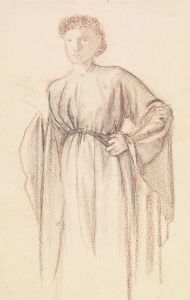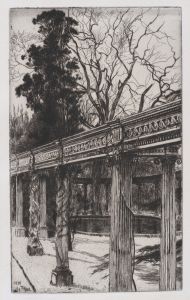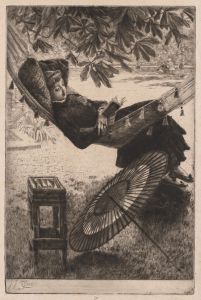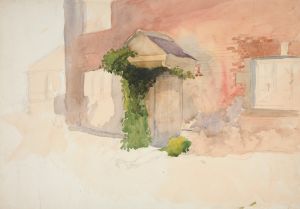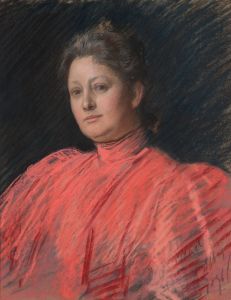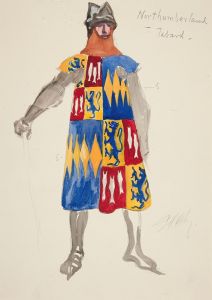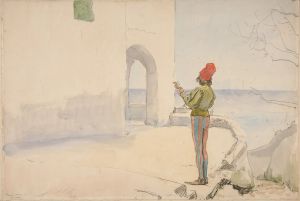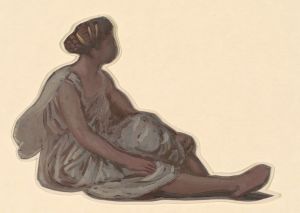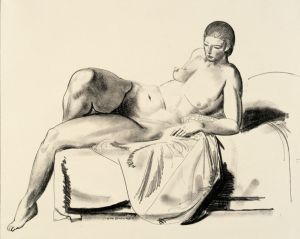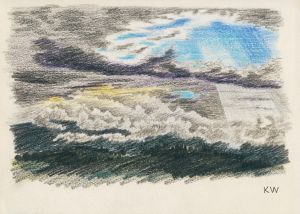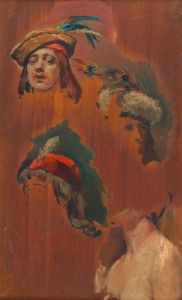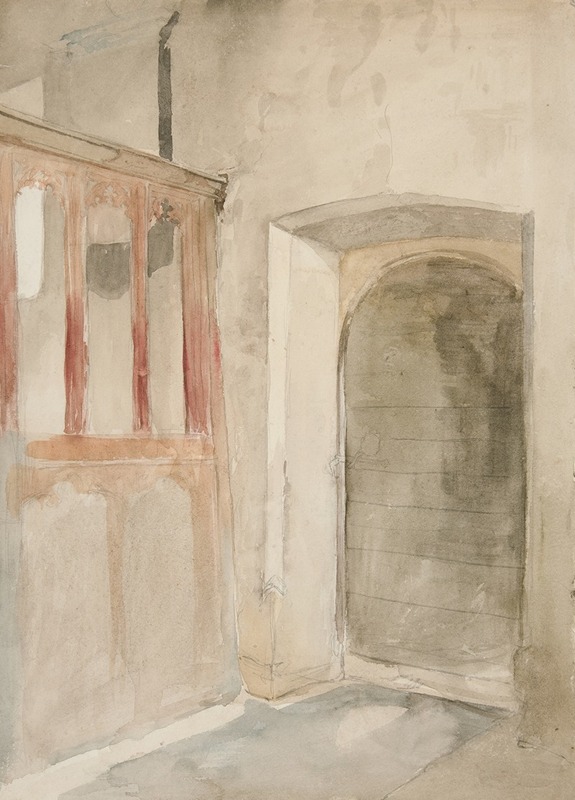
Interior Study
A hand-painted replica of Edwin Austin Abbey’s masterpiece Interior Study, meticulously crafted by professional artists to capture the true essence of the original. Each piece is created with museum-quality canvas and rare mineral pigments, carefully painted by experienced artists with delicate brushstrokes and rich, layered colors to perfectly recreate the texture of the original artwork. Unlike machine-printed reproductions, this hand-painted version brings the painting to life, infused with the artist’s emotions and skill in every stroke. Whether for personal collection or home decoration, it instantly elevates the artistic atmosphere of any space.
Edwin Austin Abbey (1852-1911) was an American artist known for his illustrations, paintings, and murals. He was particularly renowned for his depictions of Shakespearean and Victorian subjects. One of his notable works is "Interior Study," which showcases his exceptional skill in capturing intricate details and the essence of the period.
"Interior Study" by Edwin Austin Abbey is a fine example of his ability to render detailed and atmospheric interiors. The painting features a meticulously detailed room, likely from the late 19th century, reflecting the artist's keen interest in historical accuracy and his dedication to capturing the essence of the time. Abbey's use of light and shadow in this work demonstrates his mastery of creating depth and mood within an interior space.
The composition of "Interior Study" is carefully balanced, with attention to the arrangement of furniture, textiles, and other decorative elements that populate the room. Abbey's brushwork is precise, and his use of color is both subtle and effective, contributing to the overall realism of the scene. The textures of different materials, such as wood, fabric, and metal, are rendered with great attention to detail, showcasing Abbey's technical proficiency.
Abbey's career began as an illustrator for magazines such as Harper's Weekly, where he gained recognition for his detailed and historically accurate illustrations. His success as an illustrator eventually led him to pursue painting more seriously. Abbey moved to England in 1878, where he continued to develop his craft and became deeply influenced by British art and culture. This influence is evident in "Interior Study," which reflects the Victorian aesthetic and attention to detail that characterized much of his work.
In addition to his paintings, Abbey is also known for his large-scale murals, including those in the Boston Public Library and the Pennsylvania State Capitol. His work often featured historical and literary themes, drawing on his extensive knowledge of history and literature. Abbey's dedication to historical accuracy and his ability to bring scenes to life made him a highly respected figure in both the American and British art worlds.
"Interior Study" is a testament to Abbey's skill as an artist and his ability to create immersive and detailed scenes. The painting not only showcases his technical abilities but also provides a glimpse into the interior design and aesthetic preferences of the late 19th century. Abbey's work continues to be celebrated for its historical accuracy, attention to detail, and the artist's ability to capture the essence of a bygone era.
Edwin Austin Abbey's contributions to art, particularly his detailed and historically rich paintings and illustrations, have left a lasting legacy. "Interior Study" remains an important example of his work, reflecting his dedication to capturing the beauty and complexity of interior spaces with precision and artistry.





